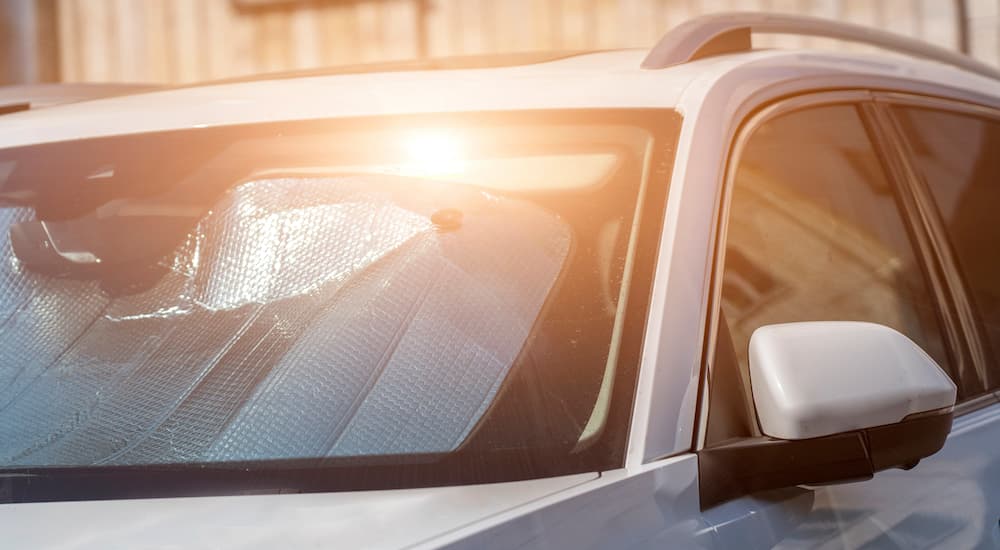The beginning of summer brings all sorts of things: warm evenings and fireflies twinkling in the sky, perfect picnic and barbecue weather, family vacations, and lazy hours spent by the pool (or at the beach, if you’re lucky). Sadly, summer also brings far-too-many news stories about children left in cars—who succumb to the heat and become another tragic statistic. The good news, however, is that these stories are avoidable and everyone can help ensure that kids aren’t harmed—or worse—by being left in a car.
Hot-Car Fatalities by the Numbers
From a purely statistical standpoint, child deaths due to being in a hot car are relatively low across the country, especially when compared to other causes like auto collisions. That being said, since all of these are essentially avoidable deaths, any number above 0 is too many—and knowing that they are statistically low is little consolation for a grieving parent. Since 1990, more than 1,000 children have died in the US due to being left or forgotten in a car that becomes dangerously hot.
While numbers have been low the last couple of years due to the pandemic, they were on the rise before that. There were 40 deaths in 2016, then 45 deaths in 2017; in 2018 there were 54 child deaths in hot cars, and another 53 deaths in 2019. That’s about one child every week dying because they remain in a vehicle that is too hot. That’s pretty horrendous, though I’m sure we all believe it couldn’t happen to us because we’d never forget our son or daughter in a vehicle. However, that’s also what most people thought before losing their child.

Why These Deaths Happen
One of the most important things to recognize when trying to combat these avoidable deaths is to understand why they happen. According to research by Kids and Car Safety, data for child hot-car deaths from 1990 to 2021 have a shocking detail: in 56% of cases, a child was unknowingly left in a vehicle. This is exactly what it sounds like: a parent or caregiver did not realize that their child was still in the vehicle and left them in there.
According to the National Highway Traffic Safety Administration, in 46% of these cases, the parent or caregiver meant to drop the child off at a daycare or preschool and simply forgot. The highest number of these incidents and deaths occur on Thursdays and Fridays—at the end of the week, when we’re all tired and ready for the weekend. The picture looks like this: a loving parent is running on empty at the end of the week, going on autopilot, and thinks they dropped off their kid at daycare. However, the child is asleep in their seat. That parent gets to work, gets out of the vehicle, and walks away without realizing they just created a tragedy.
The statistics from Kids and Car Safety indicate that in 54% of heatstroke deaths in a car, the child is one year old or younger. This is vital because at this age, rear-facing car seats are used, which look the same when occupied or unoccupied at a casual glance. Overall, 87% of children who have died in a hot car in the last 30 years were three years old or younger.
In addition to the 56% of cases due to a child being unknowingly left in a vehicle, 26% of cases occur when a child gains access to a vehicle on their own. In these situations, 68% of the time the child is between the ages of one and four years old—and is typically a boy. In another 15% of cases when child hot-car death occurs, the kid was knowingly left in the vehicle—typically when someone is “just running in real quick” while shopping or running errands. These instances are the most egregious because they are entirely avoidable, occurring due to gross negligence rather than tragic oversight.
Your Car Is a Greenhouse
Now I know what you might be thinking: “I’d never leave my child unattended for hours in a car on a hot day.” That’s great, but you’d also be falling into a trap; it doesn’t take hours and it doesn’t have to be a particularly hot day. If your car is in the sun, then it gets hot.
When you think about it, a car is essentially a greenhouse. It’s a metal and plastic structure that’s sealed up with glass windows. And, if you’ve ever been inside of a greenhouse, then you know how incredibly hot they become as they concentrate and trap solar heat; the same is true for your car.
A great deal of testing has been done to see just how dangerous a car gets—and the numbers are pretty shocking. On average, the temperature inside of a car heats up by about 40 degrees in just one hour; this is regardless of the temperature outside. In other words, it can be a very pleasant 70 degrees outside, but inside a car, temperatures can reach 110 degrees. Most of that increase in temperature occurs within the first 10-30 minutes after a car is shut off.
Researchers have even tested some of the measures that people like to use to cool off a vehicle before leaving someone in it, like running the A/C before turning the engine off or leaving the windows cracked. Cooling off the inside with the A/C only slows down heating by about five minutes. Leaving the windows cracked had an insignificant effect on the rate at which the temperature increased and on the final temperature. In other words, you really can’t fight it: cars get hot on sunny days very fast—and to alarmingly high temperatures.
Even worse, this hot interior becomes less tolerable if someone is inside the car, like a child. Anyone in the car is going to breathe; breathing adds moisture to the air, making it more humid inside the vehicle. In humid conditions, it’s more difficult for sweat to evaporate, which is how we cool down. So, when a child is left in a vehicle, the conditions are dangerously hot and they struggle to cool off. Worst of all, due to their small size, children overheat about 3-5 times faster than an adult in the same environment.
How You Can Avoid a Hot-Car Fatality
The most important thing is to not simply believe, “It can never happen to me,” and instead to take active steps to avoid a child hot-car death. A common trick that experts suggest is making sure you have a visual reminder of your child every time you are in the vehicle with them. For example, leave a stuffed animal in the child’s car seat and move it to your front passenger seat when you put your child in their seat, so you have a reminder next to you. You can also place your child’s diaper bag up front with you. In both cases, you have a visual cue to remind you that your child is in the vehicle.
You should also make it a habit to open your back door and visually check that no one is in the child seat every single time you get out of your car. It’s also a good idea to arrange with your childcare provider to have them call you right away if your child doesn’t arrive as scheduled. This can help prevent a child from being unknowingly forgotten in a vehicle. Finally, always keep your vehicle locked to ensure that a child cannot get into your vehicle; ask neighbors and visitors to your home to do the same in order to keep kids safe.
What to Do if You See a Child in a Parked Car
If you see a child alone in a vehicle, you should act quickly to ensure they’re safe. You should immediately see if there’s an adult nearby with them and remind them that their child is in the vehicle. If you don’t see an adult with the vehicle, then try to get the child’s attention and see how they’re doing. If they seem hot or sick, call 911 immediately, then take appropriate action to get the child out of the vehicle as quickly as possible.
In some cases, it might even be necessary to break a window of the vehicle. Try the doors first, to see if any of them are unlocked; if you have to break a window, then be sure to break one away from the child so they won’t be hit by glass. Most states in the US have “Good Samaritan” laws that can protect you from a lawsuit for the cost of the window. Even if they don’t, paying for someone’s window is better than witnessing a child dying. At the end of the day, we can all help prevent these kinds of deaths—and it’s important to remind others about car safety for children.




